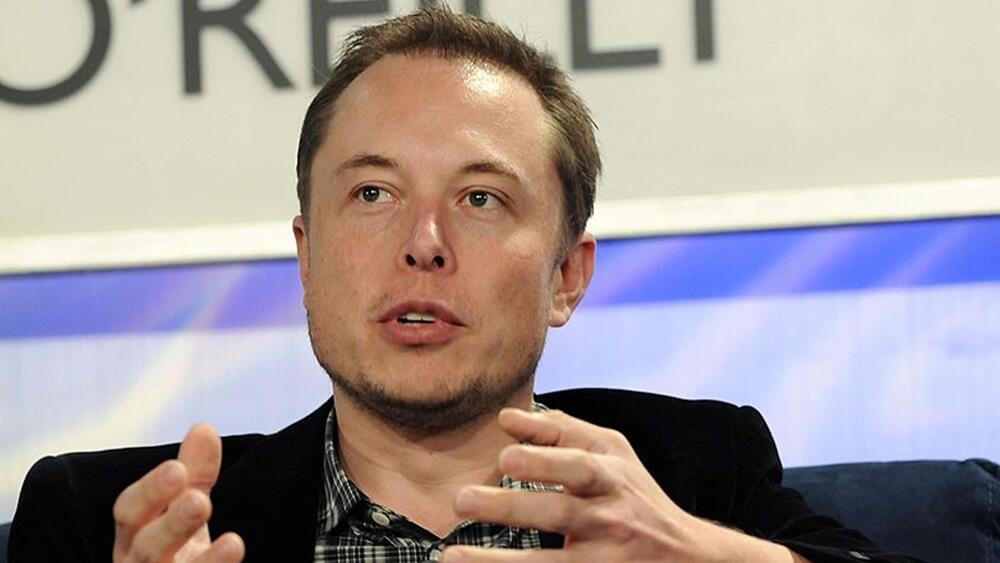Understanding autonomous weapons systems within the context of the laws of war.



‘Like conductive Play-Doh’: breakthrough could point way to a new class of materials for electronic devices.
University of Chicago.
Founded in 1,890, the University of Chicago (UChicago, U of C, or Chicago) is a private research university in Chicago, Illinois. Located on a 217-acre campus in Chicago’s Hyde Park neighborhood, near Lake Michigan, the school holds top-ten positions in various national and international rankings. UChicago is also well known for its professional schools: Pritzker School of Medicine, Booth School of Business, Law School, School of Social Service Administration, Harris School of Public Policy Studies, Divinity School and the Graham School of Continuing Liberal and Professional Studies, and Pritzker School of Molecular Engineering.

There is a mix of excitement and fear and lots of memes.
After much back and forth and a lawsuit, four days ago, Elon Musk completed his $44 billion takeover of the social media platform Twitter. Musk had put the deal on hold after his initial offer earlier this year. Later he backed out, citing a high number of fake or spam accounts on the platform, a point that then-CEO Aggarwal had publicly denied.
Musk was then taken to court by Twitter’s lawyers. The court had given the two parties time till the month’s end to work out a deal.
As soon as Musk acquired Twitter, he proceeded to fire CEO Parag Aggarwal, finance executive Ned Segal, and legal and policy executive Vijaya Gadde.
Billionaire CEO Elon Musk has finally bought Twitter after a long saga of back-and-forth negotiations and even a lawsuit. The internet is both excited and afraid, and people are expressing their opinions in all kinds of ways.

We use cookies on our website. Some of them are essential, while others help us to improve this website and your experience. If you are under 16 and wish to give consent to optional services, you must ask your legal guardians for permission. We use cookies and other technologies on our website. Some of them are essential, while others help us to improve this website and your experience. Personal data may be processed (e.g. IP addresses), for example for personalized ads and content or ad and content measurement. You can find more information about the use of your data in our privacy policy. You can revoke or adjust your selection at any time under Settings.

Tesla CEO sees Twitter as a ‘bloated’ organization, employing far more people for its revenues.
Elon Musk’s Twitter takeover has entered an interesting stage where he can sit down with the company’s lawyers and iron out a deal. However, the deal could see 5,000 employees facing the axe at Twitter, Washington Post.
Difficult times at Twitter.
Heisenberg Media/ Wikimedia Commons.
Twitter currently employs 7,500 workers, and documents accessed by the media outlet show that Musk plans to trim down the workforce by as much as 75 percent, down to a skeleton staff of just 2,000. In internal Slack channels, employees have reacted to this news with anger, WaPo reported.

The street-legal eVTOL costs only $300k.
A California-based sustainable electric transportation company unveiled the prototype of a flying car, according to a company release. The Alef “Model A,” the only flying automobile with street-legal driving and vertical takeoff abilities, is presented by Alef Aeronautics, a cutting-edge technology company developing alternative transportation solutions for soaring traffic patterns.
Alef uses innovative technology to elevate the vehicle securely above regular traffic, enabling quicker, simpler travel, and reducing the load of urban congestion.
Alef Aeuronautics.
The Alef “Model A,” the only flying automobile with street-legal driving and vertical takeoff abilities, is presented by Alef Aeronautics, a cutting-edge technology company developing alternative transportation solutions for soaring traffic patterns.

Do we need a new criteria for death, that covers the technicalities around neuro preservation, issues of legal identity upon reanimation and an approach to rehabilitation? What are the misunderstandings or misinformation that surround transhumanism and endeavour to make the distinction between transhumanism and technocracy? Should we be worried about the wrong headedness of The Population Bomb, climate catastrophism and the fashionability of long termism?
Today, I speak with Max More. As some of you may already know, Max is considered to be the founder of modern transhumanism, a philosopher and futurist who writes extensively on technology and humanity. He’s also currently ambassador and President Emeritus at Alcor Life Extension Foundation, having served almost 10 years as President and CEO there, and having been its 67th member. His 1995 University of Southern California doctoral dissertation, ‘The diachronic self identity continuity and transformation’, examined several issues that concern transhumanists, including the nature of death. He is the Co-editor of Rhe Transhumanist Reader, and he’s written many articles on transhumanism and extropianism, including the 1990 essay, ‘Transhumanism: toward a futurist philosophy’, in which he introduced the term transhumanism, in its modern sense.
This episode of The Future of You covers:

It looks like Musk’s buy-out will lead to the creation of his own app named X.
According to a report from Bloomberg News, Elon Musk has informed Twitter that he is once more prepared to purchase the business at his original offer of $54.20 a share. This news is also supported by an official U.S. Securities and Exchange Commission (SEC) filing from the 3rd of October 2022.
“Elon Musk is proposing to buy Twitter Inc. for the original offer price of $54.20 a share… Musk made the proposal in a letter to Twitter, according to people familiar with the matter, who asked not to be identified discussing confidential information,” states the Bloomberg report.
JD Lasica/Wikimedia Commons.
“Lawyers communicated the proposal to Twitter’s lawyers overnight Monday and filed a letter confidentially with the Delaware Chancery Court ahead of an emergency hearing on the matter scheduled for Tuesday,” added the Wall Street Journal on the news of Musk’s apparent change of heart.

The NUG includes lawmakers from the National League for Democracy (NLD) and ethnic representatives, most of them in exile. The NUG is supported by the Karen, Karenni, Kachin and Chin ethnic groups, yet it still struggles to gain international recognition and the material support needed to eliminate military rule.
The NUG’s Federal Democracy Charter asserts that Myanmar’s states should own land and natural resources. It also claims that the police and army should be under the control of state civilian governments. The NUG believes that all citizens who swear allegiance to the nation, regardless of their ethnicity, should have the right to full citizenship — a clear departure from the 1982 Burma Citizenship Law. It also argues for the separation of religion and politics. But many NLD members from the majority Bamar ethnic group may not fully endorse the Charter.
It is unclear whether the resistance can continue without more international support and recognition amid an escalating economic and humanitarian crisis. The military still gets supplies from Russia and Russian President Vladimir Putin has welcomed Min Aung Hlaing as Myanmar’s leader by inviting him to Russia and meeting him at Russia’s Eastern Economic Forum. The military is used to surviving sanctions and diplomatic isolation — a situation that merely confirms their nationalist ideology so long as they still get military supplies from patrons like Russia.

So how should companies begin to think about ethical data management? What measures can they put in place to ensure that they are using consumer, patient, HR, facilities, and other forms of data appropriately across the value chain—from collection to analytics to insights?
We began to explore these questions by speaking with about a dozen global business leaders and data ethics experts. Through these conversations, we learned about some common data management traps that leaders and organizations can fall into, despite their best intentions. These traps include thinking that data ethics does not apply to your organization, that legal and compliance have data ethics covered, and that data scientists have all the answers—to say nothing of chasing short-term ROI at all costs and looking only at the data rather than their sources.
In this article, we explore these traps and suggest some potential ways to avoid them, such as adopting new standards for data management, rethinking governance models, and collaborating across disciplines and organizations. This list of potential challenges and remedies is not exhaustive; our research base was relatively small, and leaders could face many other obstacles, beyond our discussion here, to the ethical use of data. But what’s clear from our research is that data ethics needs both more and sustained attention from all members of the C-suite, including the CEO.